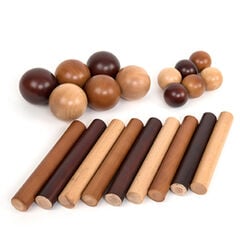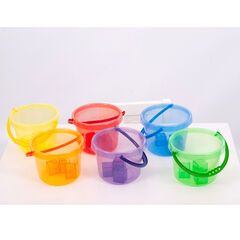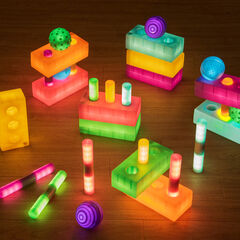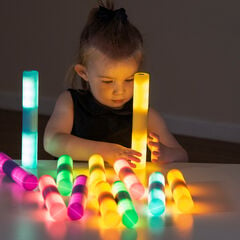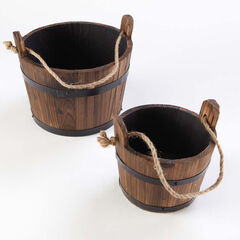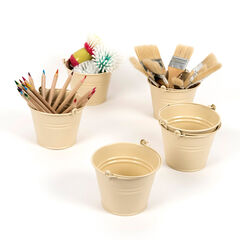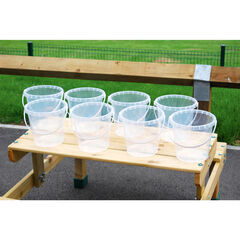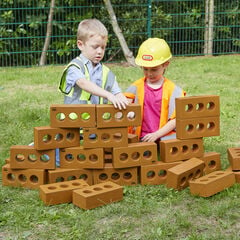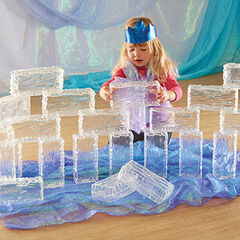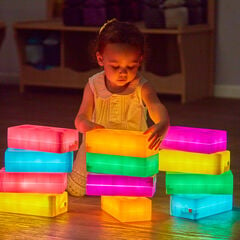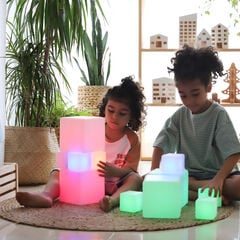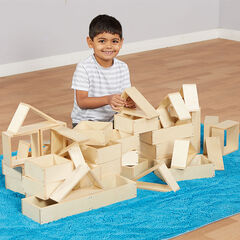Exploring STEAM in the Early Years with the STEAM Discovery Centre
STEAM stands for Science, Technology, Engineering, Arts, and Maths. You might be more used to the term STEM, but Arts is often added to recognise the role of creativity and design in STEM fields. Including Arts makes these subjects more early years friendly too.
STEAM learning is becoming increasingly common in the years before formal school education begins. In fact children that experience this type of learning early on have been shown to transition more easily and confidently into school life, with better results there too.
In the early years, STEAM focuses on self-directed play and exploration rather than direct teaching of concepts. Think of your children as little scientists conducting experiments and encourage them to develop curious and inquisitive minds.
TTS’s STEAM Discovery Centre is a perfect resource for this child-led explorative play. Not only is it big enough to be incredibly appealing to young children and to encourage collaborative or parallel play, but there are so many different STEAM concepts children can explore and learn just by adding in simple resources you’ll already have in your setting.
Where to start with the STEAM Discovery Centre
While you’ll want to give your children the chance to explore the STEAM Discover Centre in their own way, it might be hard to know where to start with something so versatile. Below I’ve outlined some open-ended ideas that use simple resources you’ll already have to give rich STEAM learning experiences.
STEAM Exploration with the Balance
The top horizontal part of the Discovery Centre is like a balance scale. Most children will be immediately familiar with how this works from sitting on a seesaw.
Getting started
One of the first things you could do is hang down a bucket from each end. Children can then choose their own resources (wooden balls, bricks, toys etc.) to investigate making one end go down. This will then lead on to identifying which end is heavier using comparative language.
They can count as they add in objects and think about relative sizes and weights of the things too. They might also use ordinal numbers, for instance noticing it was on the fifth wooden ball that the scales tipped.
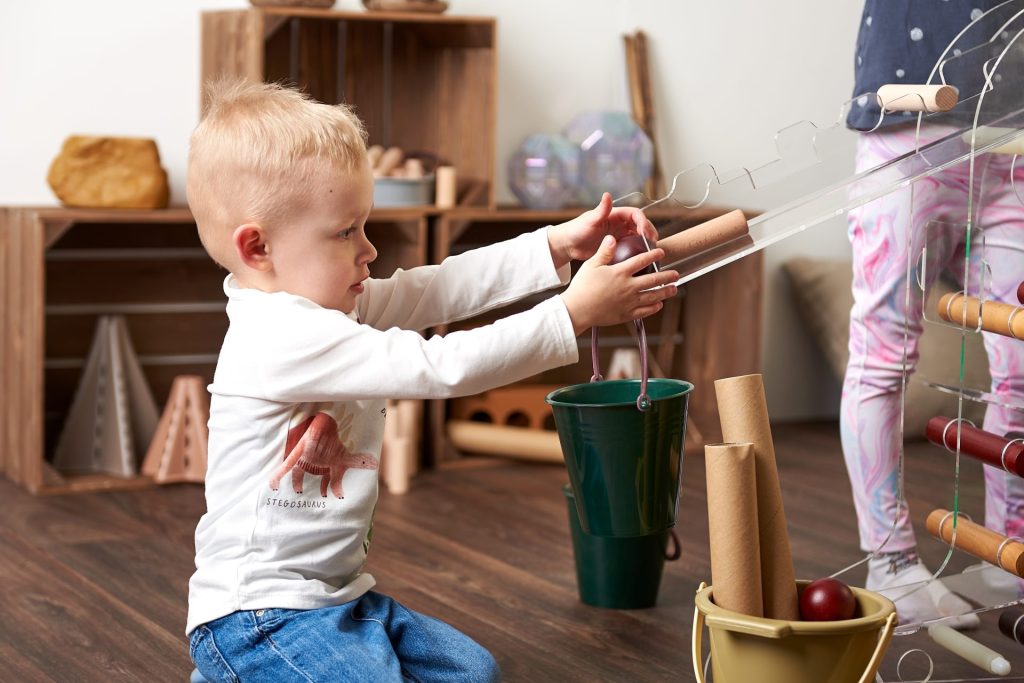
Further Exploration
If you leave out extra buckets children might explore by adding these on. My own four year old walked up to the Discovery Centre and started adding and removing buckets. I heard her say quietly to herself, “Do the buckets make it heavier?” Adults can join in to ask these sorts of questions and to encourage children to make predictions and then test them out too.
Extended Exploration
A more advanced exploration would be to try moving the same bucket closer to the centre of the balance (the fulcrum) to see how that affects the scales. Again children might have some experience of this already from sitting in different places of a seesaw.
All of this could also be done by fitting blocks or cylinders into the grooves along the top or by putting things directly onto the surface of the balance.
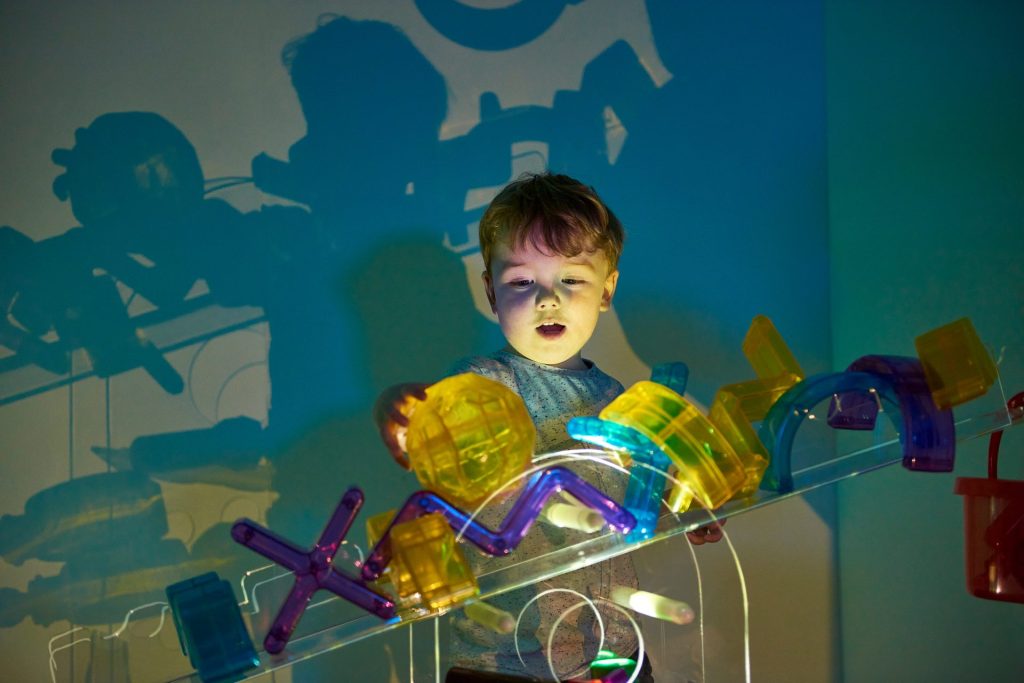
STEAM Learning gained from these activities:
- Weight and Mass (comparative language: heavier/lighter, more/less, same/equal)
- Direction (up/down, higher/lower)
- Balance (understanding a lever and fulcrum)
- Numbers (counting, one-to-one correspondence, more/fewer)
- Scientific Enquiry (predicting, testing, making observations)
Key questions:
To facilitate exploration and encourage predictions, adults might ask questions such as:
- Which one is heavier? How do you know?
- How many balls do you predict/think it will take to tip the scales down on this end? Let’s test to find out.
- What do you think will happen when we add this bucket to that end?
- What happens if you move that bucket closer to the middle of the balance?
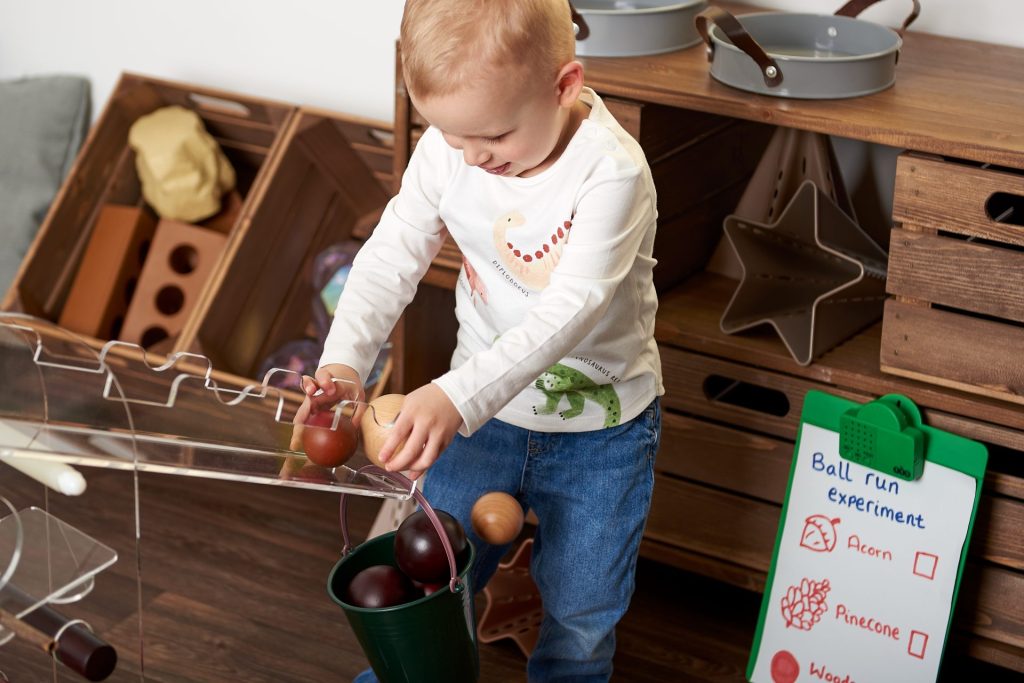
Other resources to use with the Balance:
- Buckets or any containers with string handles tied on
- Blocks
- Wooden balls and cylinders
- Sensory tubes
- Free choice toys to compare the weight of
- Water when used outdoors
The best thing about the STEAM Discovery Centre, like STEAM learning in general, is that you don’t need to actively teach anything. Instead you’ll simply facilitate children to explore concepts in the world around them using carefully chosen resources, encouragement and probing questions.
Its versatility also means it won’t stand unused in the corner of your room after the first week. Children can enjoy returning to it on different occasions to reinforce what they’ve previously learnt, to take their investigations further, or to explore with new resources.
Take a look at my videos for demonstrations of some of these ideas using the STEAM Discovery Centre. To read another blog and find out more ways to use the STEAM Discovery Centre, click here.
With many thanks to Laura Cross from Little STEAMers for writing this blog for us.
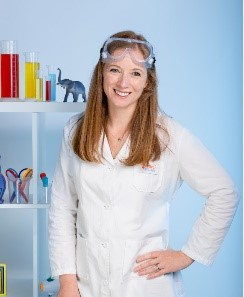
About the Author:
Laura is a qualified and experienced primary teacher and STEM specialist who runs Inventors & Makers workshops, after-school clubs and CPD both virtually and in-person for nurseries and primary schools all over the world. She wants to help teachers feel confident to teach engineering themselves and so allow pupils everywhere to experience the hands-on educational fun of STEM.
Website: //www.inventorsandmakers.com/eyfs or write inventorsandmakers.com
Facebook: //www.facebook.com/inventorsandmakers
Instagram: //www.instagram.com/inventorsandmakers/
Twitter: //twitter.com/inventorsm


